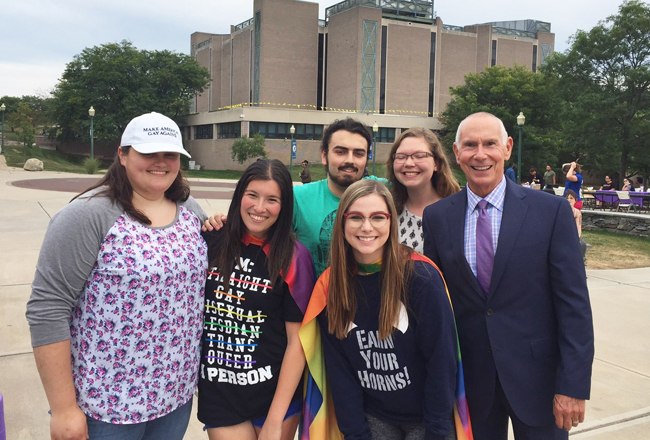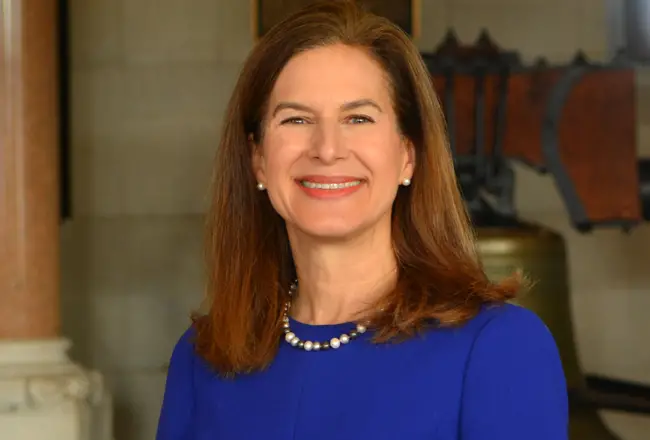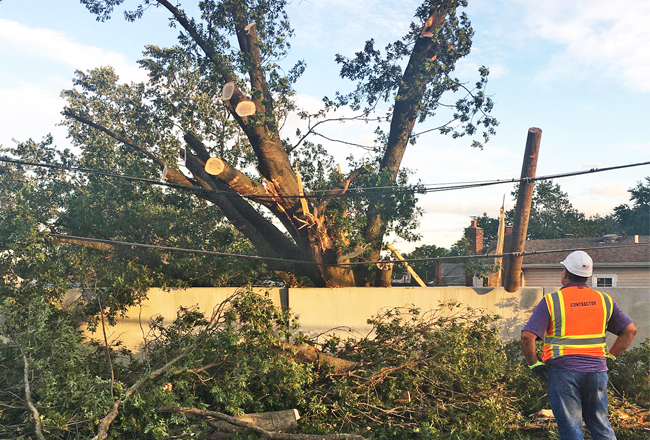This article has been updated to indicate that Mark Ojakian is retiring at the end of the year.
Cautious optimism” is the byword for Mark Ojakian these days.

The Connecticut State Colleges and Universities (CSCU) president used the phrase at least three times during a conversation with the Business Journal ”” and it”™s little wonder. The system ”” whose 17 institutions include Western Connecticut State University in Danbury, Norwalk Community College, Housatonic Community College in Bridgeport and the online Charter Oak State College ”” is facing a number of challenges.
First and foremost is the fate of the fall semester and beyond in the Covid-19 era ”” the cancellation of which Ojakian said could cost the system to run “over $100 million in deficit at least.”
“If we are not able to open at all in the fall, that means we will not have any sort of revenue for room and board and less tuition revenue coming in,” he said ”” a situation potentially complicated even more if a majority of students balk at taking all their classes online.
CSCU issued about $25 million in room and board refunds for the spring 2020 semester, Ojakian said, “and that was just for approximately six to seven weeks. If you have to refund (those fees) from mid-August to November, you”™re talking close to $100 million just in room and board refunds.”
The spring refunds were not fully covered by the Coronavirus Aid, Relief and Economic Security (CARES) Act. CSCU Chief Financial Officer Ben Barnes recently told the state”™s Appropriations Committee that the system had borne about $5.5 million in expenses due to the purchase of nearly 1,500 laptops and face masks, as well as from investing in new cellular hot spots for both students and faculty without internet access.
The system”™s “best bet” to recoup those expenditures, Barnes said, is the federal government ”” although there is no guarantee that such funds are forthcoming. The Health, Economic Assistance, Liability Protection and Schools (HEALS) Act, currently being debated by Congress, includes $70 billion for K-12 schools that open on time, with colleges and universities to receive $30 billion.
However, distribution of some of those funds is based on some relatively complicated criteria, such as how many full-time Pell Grant recipients each university has. Since a majority of community college students are not full time, those schools would likely get short shrift.
There is also, of course, the chance that HEALS will not get Congressional approval, at least in its current state.
ENROLLMENT QUESTIONS
Ojakian is also cautiously optimistic about CSCU enrollment figures this fall. While the system”™s Board of Regents has predicted a 10% drop in enrollment at its four universities, “The preliminary numbers we”™re seeing have been better than that,” he said. “We”™re hopeful that no institution hits that 10% mark.”
The system also extended the time period for when students had to confirm whether they would be living on campus to the end of July; as a result, total enrollment figures were not yet available.
Ojakian said one positive for the system could come from the fact that Connecticut has maintained such a low Covid infection rate for months.
“There are high school graduates who are considering going out of state to college, as well as (college) sophomores, juniors and seniors wondering about going back to out-of-state schools,” he said. “If I”™m going to school in Texas, Florida, Arizona or one of those very hot spots, I”™d be thinking that maybe I should go instead to one of our four state universities.”
Ojakian said there is “a lot of interest” by such Connecticut residents, “who are taking a second look at our institutions. I”™m cautiously optimistic that we”™ll see an uptick for those demographic areas.”
Also playing a positive role is the state”™s tuition- and fee-free community college program, Pledge to Advance Connecticut (PACT), which so far this year has seen more than 2,200 qualifying students receiving $2.5 million in grant awards. That program also lasted through July.
Not only are such programs attractive to students, Ojakian said they are also drawing significant attention from the recently unemployed who “are looking for opportunities to retool their skills, go into another line of work. You can complete a certificate in manufacturing in 10 months and start a job at 50, 60, 70,000 dollars.”
CONSOLIDATION
Ojakian also expressed confidence that his controversial “Students First” plan to consolidate CSCU”™s 12 community colleges into one accredited facility will pass. Opponents to the plan, which include numerous students and faculty members, as well as the five unions that represent faculty and staff, have protested the loss of jobs that would be made redundant and questioned whether the move would truly result in the cost-savings and improvements to education that have been promised.
Forward momentum is continuing to be realized, however. The CSCU Board of Regents has approved a name for the consolidated school ”” Connecticut State Community College (CSCC) ”” and former Norwalk Community College President David Levison as its interim president.
At its June 23 meeting, the New England Commission of Higher Education (NECHE), whose approval is needed for CSCC to be accredited, accepted CSCU”™s progress report. The body also asked for the next progress report, due April 1, 2021, to include more specific information about the college”™s internal governance system; updated figures on current and projected enrollment; and the recent, current, and projected budgets of the 12 community colleges that are still separately accredited.
“We”™ve made significant progress since last year,” Ojakian said, “and NECHE was satisfied with the direction we”™re moving in.”
If all goes according to plan, he said, CSCC will be fully operational by the fall of 2023. The merger will save an approximate $23 million a year, Ojakian said.
“Last year we saved over $10 million” due to a number of consolidating moves, he noted, and estimated that another $16 million will be saved this year ”” again, provided there are no coronavirus-related interruptions.
For all the progress, however, Ojakian said serious efforts on “equity and equality” still must take place for minority students, especially Black and Latinx populations.
In the meantime, Ojakian praised Gov. Ned Lamont”™s efforts at steering Connecticut through the Covid crisis and pledged to do the same.
“He”™s done an incredible job of keeping Connecticut safe,” he said. “He”™s gone about reopening in a very thoughtful, strategic, phased-in way. What we”™re doing is following his lead.
“All things being equal,” Ojakian said, “I”™m cautiously optimistic that we will have a productive and robust fall semester, and beyond.”
ӢӢӢӢӢӢӢӢӢӢӢӢӢӢӢӢӢӢӢӢӢӢӢ
Ojakian to retire at the end of the year
On Aug. 12, Ojakian announced he will retire from CSCU on Jan. 1. He said the Board of Regents is undertaking a national search for his successor.The 65-year-old, who took the CSCU post in 2015, previously served as chief of staff for former Gov. Dannel Malloy; before that he was deputy comptroller under State Comptroller Nancy Wyman, who became Malloy”™s lieutenant governor.“Mark Ojakian has been a dedicated public servant in Connecticut for more than 40 years,” said Gov. Ned Lamont. “Over the past five years, Mark brought stability to a system that was in turmoil. He recognized that public higher education represents not just opportunity for individuals to expand their knowledge and improve their lives, but a critical component of the state”™s long-term workforce development strategy.“He refocused the CSCU system to put the needs of students at the forefront, and our public colleges and universities are in a much better position because of his leadership,” Lamont added.



















